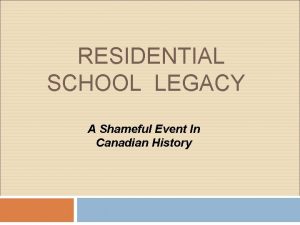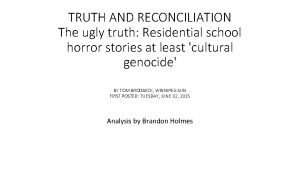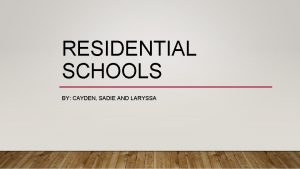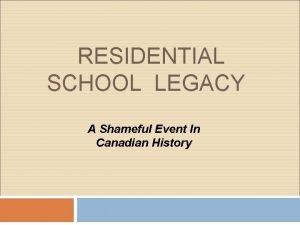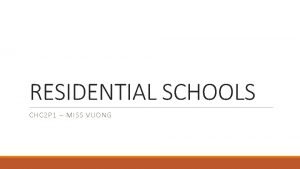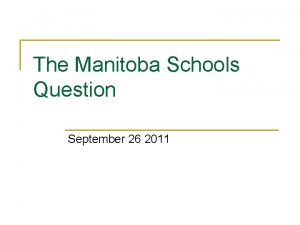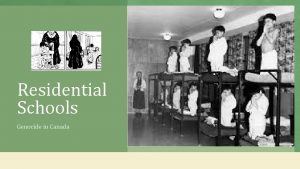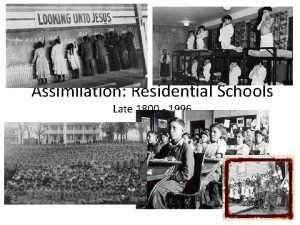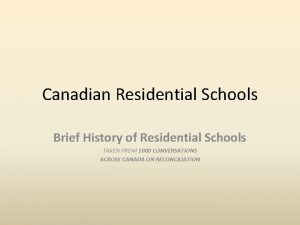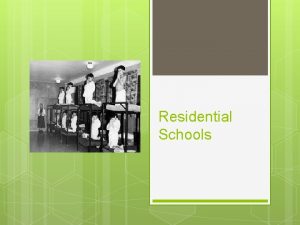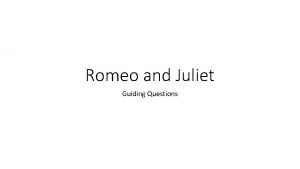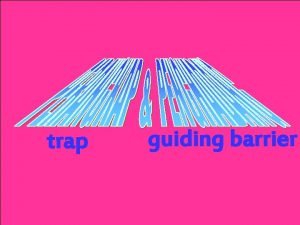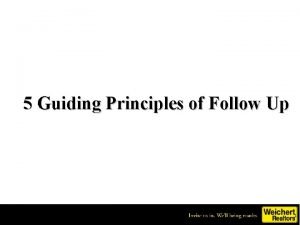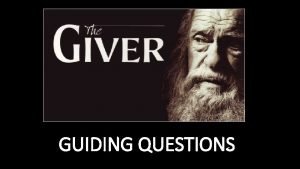RESIDENTIAL SCHOOLS GUIDING QUESTION What are Residential schools















- Slides: 15

RESIDENTIAL SCHOOLS

GUIDING QUESTION ● What are Residential schools and why were residential schools created? ● What impact has residential schools had on the children who attended them?

VOCABULARY ASSIMILATION CULTURAL GENOCIDE

ASSIMILATION the absorption and integration of people, ideas, or culture into a wider society or culture.

CULTURAL GENOCIDE “It is the absolute destruction of our ways, our languages, our families and identities. From my perspective it is a stepping stone in the right direction to call it cultural genocide. It is the starting point to a much larger process of awareness, recognition and reconciliation. ” — Kahente Horn-Miller (Kanien: keha’ka/Mohawk; Assistant Professor in the School of Canadian Studies, Carleton University)






TURN AND TALK What were residential Schools? What was the stated purpose? What are some of the consequences residential schools have had on first nation peoples.


Class Discussion Why do you think Chanie chose to run away from residential school? What does this say about the conditions students faced in the school? The quote in the Minute, “Kill the Indian in the child, ” was frequently used to describe the aim of the residential schools. What does this tell you about the intentions of the policies that led to the formation of the Indian residential school system in Canada? Do you think the quote accurately reflects the intentions of the residential schools? Why do you think this Minute is told from the perspective of Chanie’s sister, Pearl? How does this connect to the tradition of oral history? See “The Oral Tradition” note on page 10. What kind of impression of the residential schools does this Minute leave? Compare this to what you have learned about residential schools from other sources. Why is it important to explore different perspectives and use multiple sources? How do you think this story might be different if it were told from the perspective of the school’s principal or a teacher? What does this teach you about historical perspective and how we remember the past?

Photo Analysis http: //www. thecanadianencyclopedia. ca/en/

SELF-ASSESSMENT KNOWLEDGE PARTICIPATION
 Mikael ferm
Mikael ferm Costa's levels questions
Costa's levels questions Map of residential schools in canada
Map of residential schools in canada Residential schools horror stories
Residential schools horror stories Before and after residential schools
Before and after residential schools Residential schools
Residential schools Wabasca residential school
Wabasca residential school Residential school photos show legacy
Residential school photos show legacy Residential schools canada
Residential schools canada Powerschool hsv
Powerschool hsv Safety reach target
Safety reach target Manitoba schools question
Manitoba schools question Question word simple present
Question word simple present Compelling and supporting questions examples
Compelling and supporting questions examples Closed question
Closed question Compelling questions definition
Compelling questions definition


